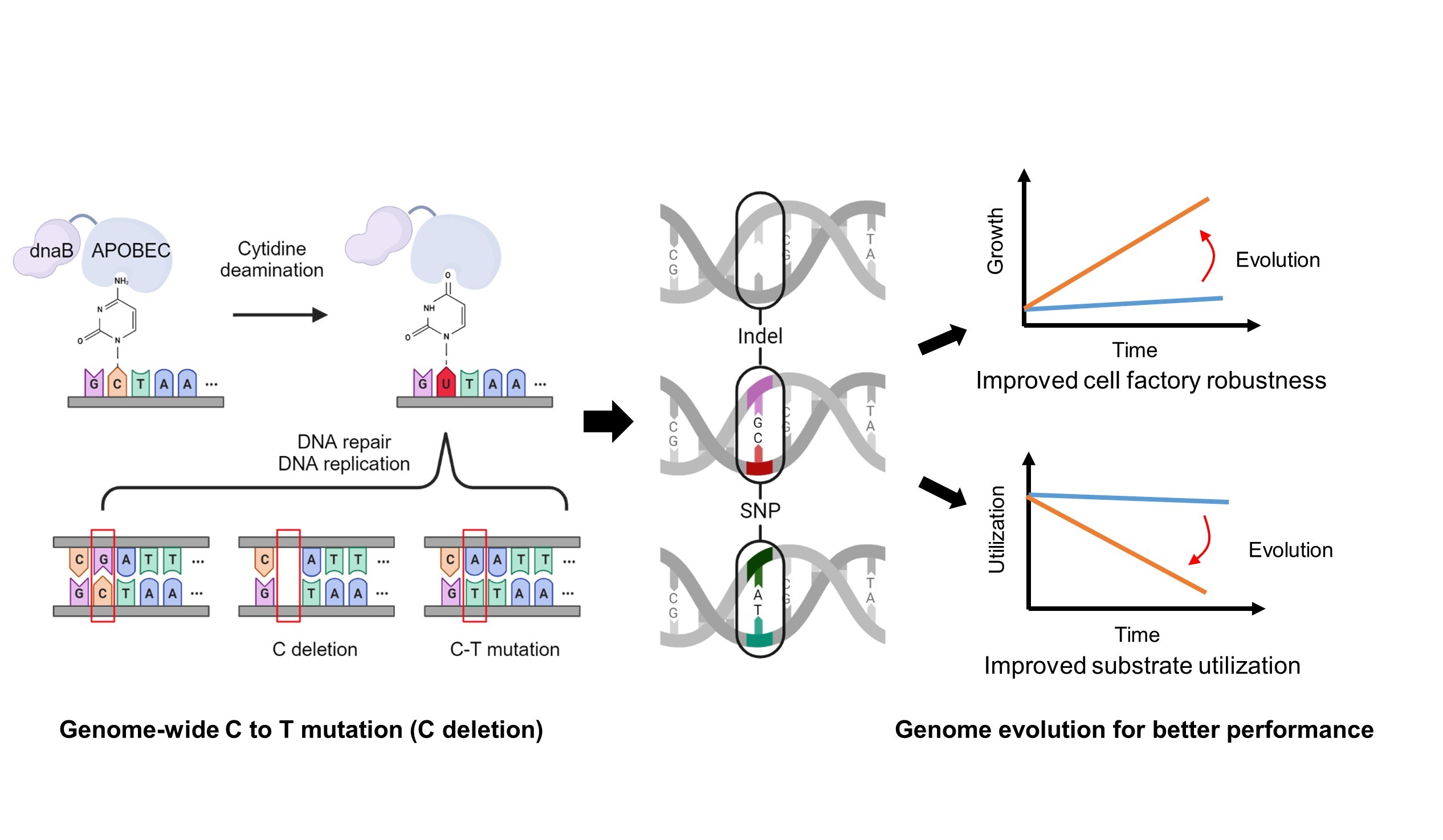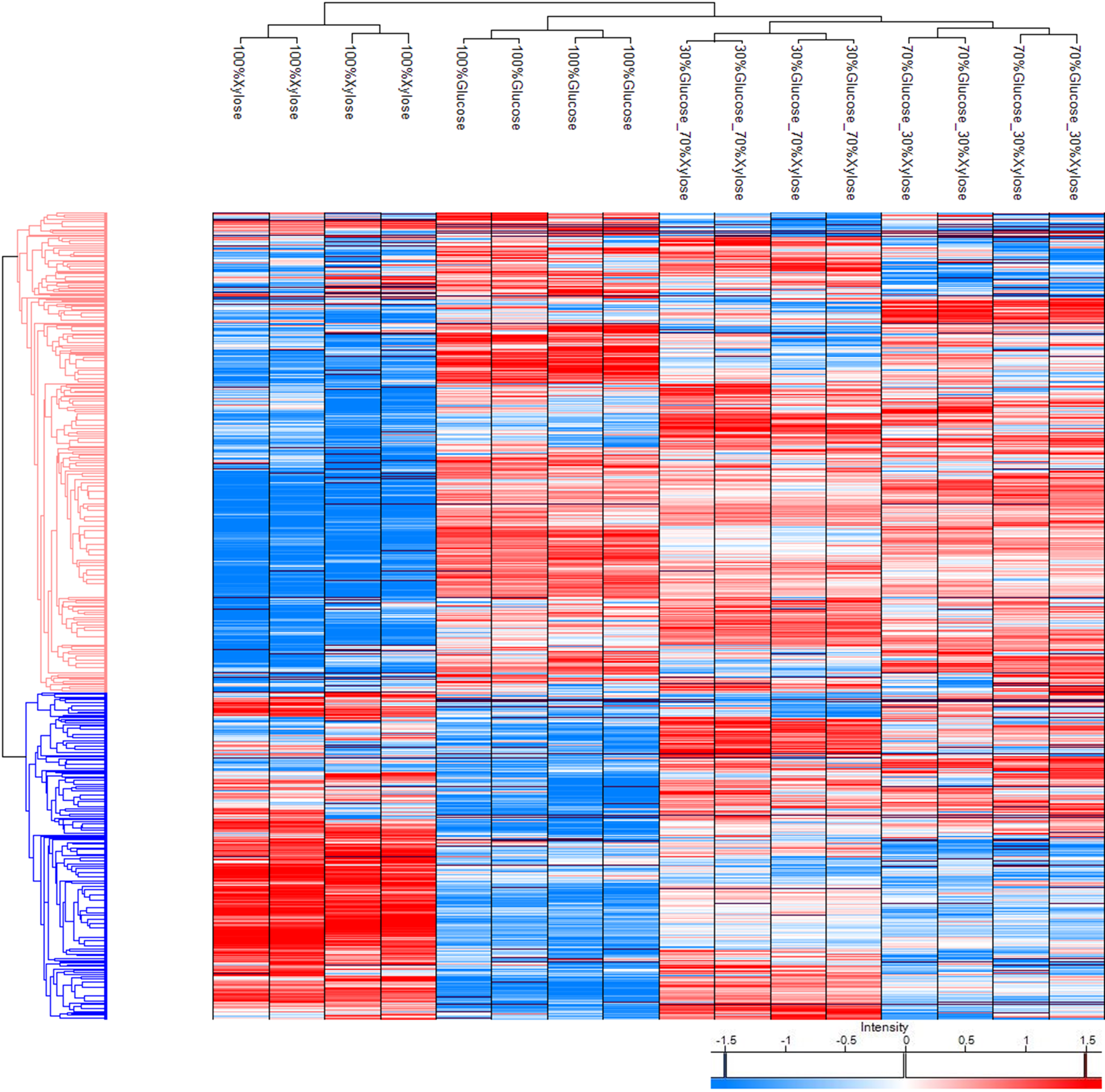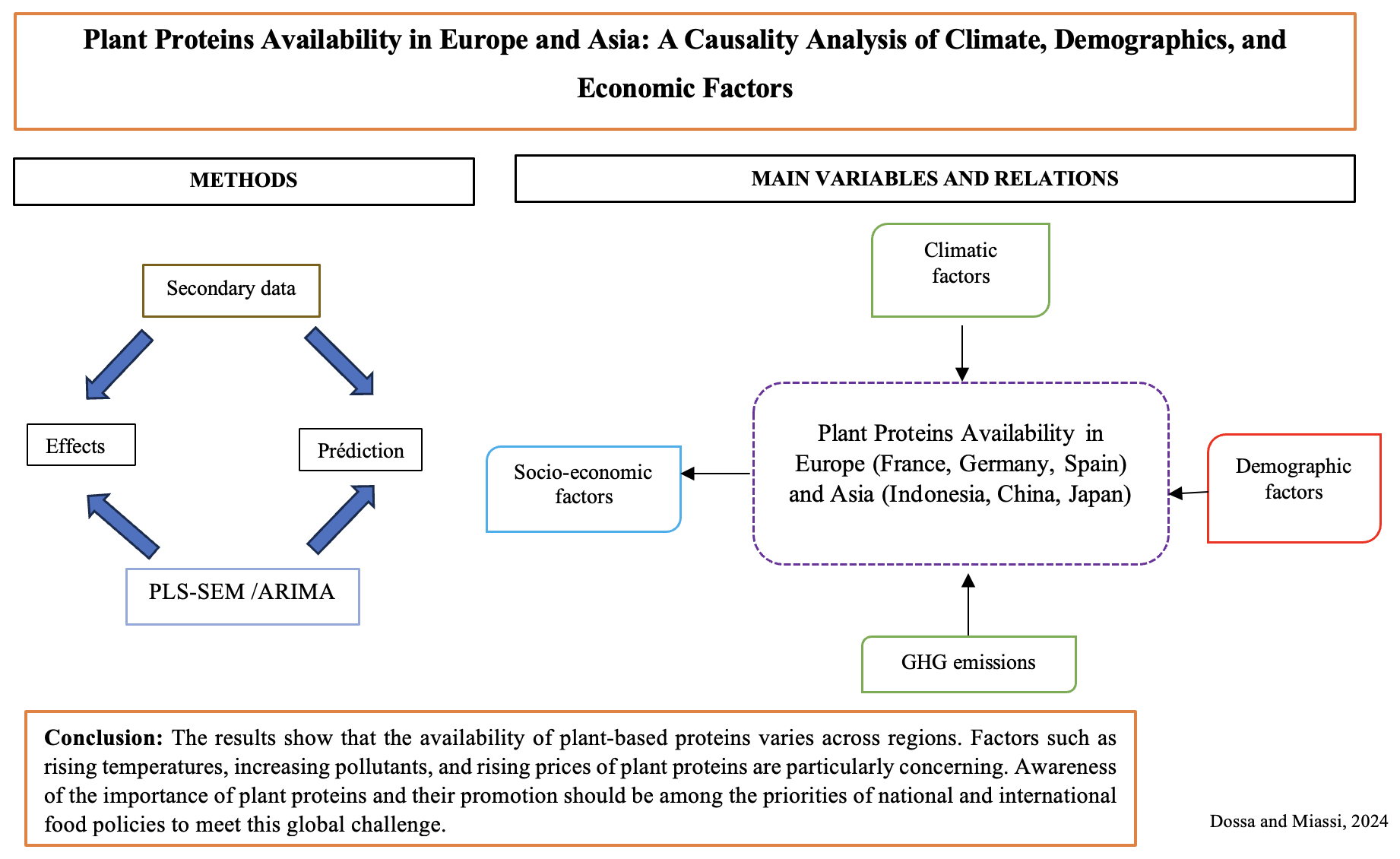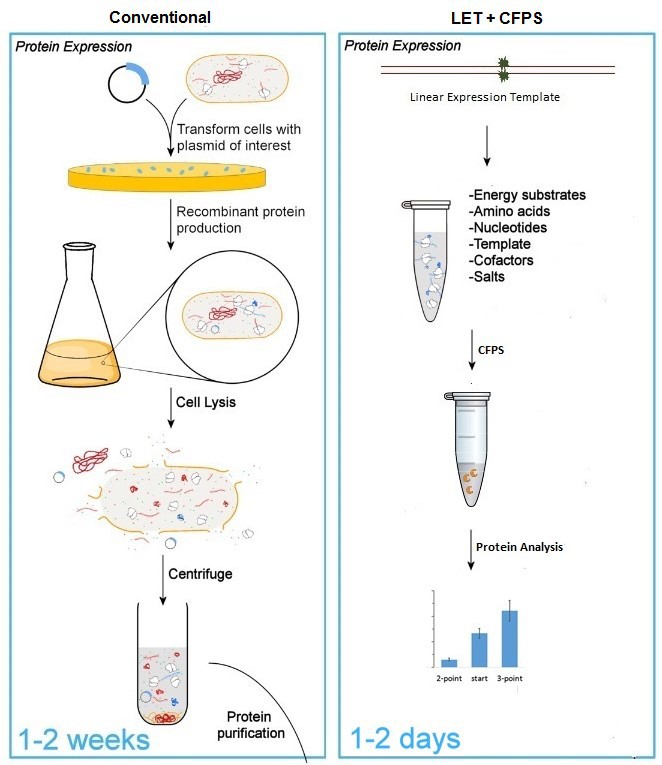Found 4 results
Article
17 June 2024Cytosine Deaminase-Assisted Mutator for Genome Evolution in Cupriavidus necator
Cupriavidus necator H16 has been intensively explored for its potential as a versatile microbial cell factory, especially for its CO2 fixation capability over the past few decades. However, rational metabolic engineering remains challenging in the construction of microbial cell factories with complex phenotypes due to the limited understanding of its metabolic regulatory network. To overcome this obstacle, laboratory adaptive evolution emerges as an alternative. In the present study, CAM (cytosine deaminase-assisted mutator) was established for the genome evolution of C. necator, addressing the issue of low mutation rates. By fusing cytosine deaminase with single-stranded binding proteins, CAM introduced genome-wide C-to-T mutations during DNA replication. This innovative approach could boost mutation rates, thereby expediting laboratory adaptive evolution. The applications of CAM were demonstrated in improving cell factory robustness and substrate utilization, with H2O2 resistance and ethylene glycol utilization as illustrative case studies. This genetic tool not only facilitates the development of efficient cell factories but also opens avenues for exploring the intricate phenotype-genotype relationships in C. necator.

Article
25 March 2024Proteomic Analysis of Pleurotus ostreatus Grown on Glucose and Xylose Mixtures in Submerged Fermentation Provides Insights into Differentiated Mycelial Composition
Pleurotus ostreatus, an edible white-rot fungus of great commercial and nutritional value, grows by metabolizing mainly glucose and xylose, the two major sugars in lignocellulosic biomass. In this study, a comparative proteomic analysis of P. ostreatus grown in submerged fermentation on a medium with glucose, xylose and mixtures of them as carbon sources was conducted. In the same conditions, the metabolic response of the fungus was evaluated in the production of the main nutritional components of the fungus such as proteins, lipids, and intracellular and extracellular polysaccharides. The proteomic analysis revealed that glucose and xylose upregulate different clusters of proteins. Glucose mainly up-regulates macromolecule metabolic processes, translation and glycolysis whereas xylose up-regulates, small molecule metabolic processes and tricarboxylic acid cycle (TCA). The mixtures show mostly similarities with the proteome response to glucose, although there are differential responses depending on xylose concentration. The carbon source type found to affect the basic macromolecule metabolic processes, with amino acids biosynthesis to differentiate mostly. An analysis of the upregulated proteins through the STRING database revealed that xylose upregulates mostly proteins related to amino acid biosynthesis. Leucine, Valine and Isoleucine biosynthesis pathways were found to be the most triggered pathway. All the branched-chain amino acids (BCAAs)-related enzymes intensities were gradually increased when xylose concentration was increased in the growth medium. BCAAs play an important role in the human diet so the enhancement of BCAAs biosynthesis pathway for P. ostreatus could convert it to a very remarkable protein substitute in human diet. These findings provide new insights into the proteomic and metabolic response of the fungus to the major sugars of lignocellulosic biomass, which are not well understood until now.

Article
11 January 2024Plant Proteins Availability in Europe and Asia: A Causality Analysis of Climate, Demographics, and Economic Factors
The article examines the availability of plant-based proteins in Europe and Asia, considering the challenges posed by climate, demographics, and economics. The availability of these proteins is crucial given the growing impact of climate, economic, and social variables. Indeed, these factors play a decisive role in the production and accessibility of plant-based proteins across countries. The study employed a causality analysis method using regression models to determine the relative impact of these factors on protein availability. Two indicators were prioritized: total national production and the daily accessible quantity per person. This approach made it possible to construct hypothetical trajectories, showcasing the interrelations between the different variables. The results show that the availability of plant-based proteins varies across regions. Factors such as rising temperatures, increasing pollutants, and rising prices of plant proteins are particularly concerning. In this context, legumes appear as a promising alternative. They offer resilience against climatic variations while being an excellent protein source. The findings also encourage rethinking our consumption. Meat, with its significant ecological footprint, should see its consumption decrease in favor of plant-based proteins, ensuring a more sustainable diet. To facilitate this transition, the importance of appropriate public policies and incentives for producing and consuming plant proteins is emphasized.

Article
18 December 2023Time-efficient and Semi-automated Production and Screening of Proteins
Fast, flexible and non-randomized modification, production and screening of proteins in fully automated system are of high interest in biological research and applications. The conventional methods for protein engineering and screening, especially for mutations of multiple residues. are time consuming and often unreliable. We demonstrate here a new, fast and flexible protein production and screening method which combines linear expression template (LET) based cell free protein synthesis (CFPS) with specific screening methods. This approach is demonstrated using green fluorescence protein, phosphoserine aminotransferase (serC) and aspartokinase III (AKIII) as model systems. The results show that mutants with changes in different protein properties upon multiple point mutations can be produced and screened within 6 to 15 h. This method can be used further to generate mutants of enzymes and multi-enzyme complexes and be implemented within the workflow of a feedback-guided protein optimization and screening system.
